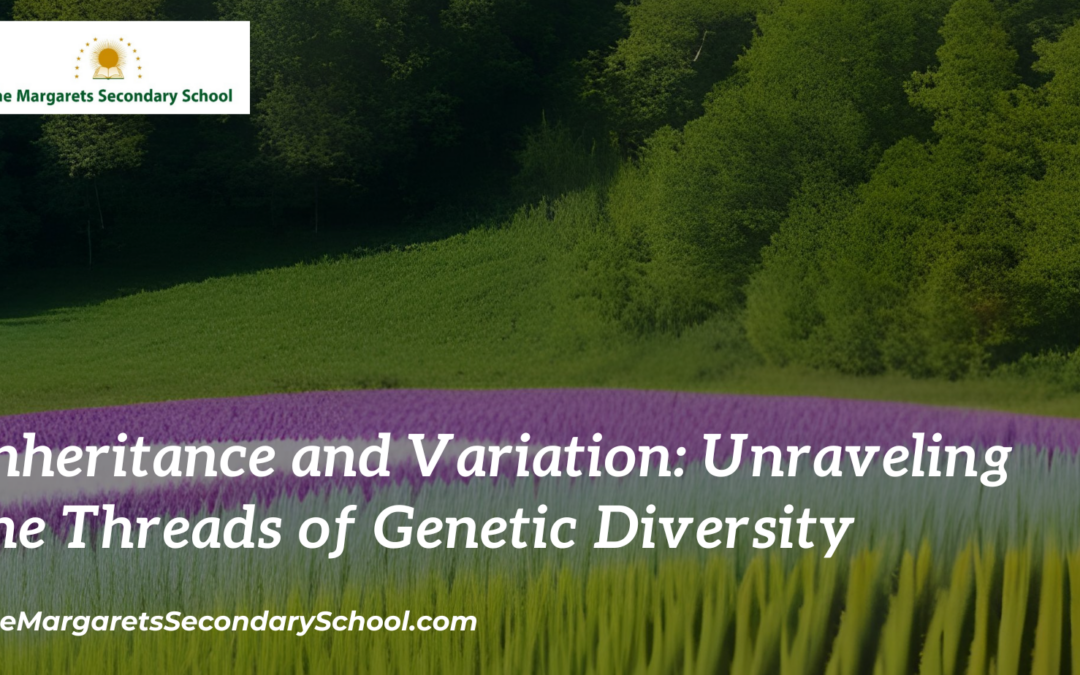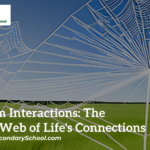Inheritance and Variation
At the heart of life’s incredible diversity lies a fundamental biological phenomenon: inheritance and variation. These intertwined processes are the driving forces behind the vast array of species that inhabit our planet, each with its unique traits and characteristics. Understanding inheritance and variation is like reading the code of life, revealing the secrets of how organisms pass on their traits from one generation to the next.
Inheritance: Passing Down the Blueprint
Inheritance refers to the transfer of genetic information from parent organisms to their offspring. This genetic information is stored in the form of DNA, the molecule that encodes the instructions for building and maintaining an organism. Every living being’s DNA is made up of a sequence of nucleotide bases, and the arrangement of these bases holds the key to the organism’s traits and characteristics.
The process of inheritance occurs through reproduction, which can be either sexual or asexual. In sexual reproduction, genetic material from two parents is combined to create offspring with a unique combination of traits. This results in genetic diversity, as each individual inherits a mixture of genes from both parents. In asexual reproduction, genetic material is passed from a single parent to offspring, leading to limited variation.
Variation: The Spice of Life
Variation is the diversity of traits found within a population of organisms. It arises due to differences in the genetic makeup of individuals within a species. This genetic diversity is a cornerstone of evolution and adaptation, as it provides the raw material upon which natural selection acts.
Variation can be categorized into two main types: continuous and discontinuous. Continuous variation refers to traits that exist on a spectrum, like height or weight. These traits are influenced by multiple genes and environmental factors, resulting in a range of possible values. Discontinuous variation, on the other hand, involves traits that fall into distinct categories, such as blood type or eye color, often influenced by single genes.
Mendel’s Legacy: Understanding Inheritance Patterns
The study of inheritance gained significant insights through the work of Gregor Mendel, known as the father of genetics. Mendel’s experiments with pea plants in the 19th century unveiled the fundamental principles of inheritance, including dominant and recessive traits, as well as the concept of alleles—different versions of a gene that can produce variations in a trait.
Mendelian genetics laid the groundwork for our understanding of inheritance patterns and how traits are passed down from generation to generation. Today, modern genetics continues to explore the complexities of inheritance, including the interactions between multiple genes, environmental influences, and the role of mutations.
Genetic Variation and Adaptation
Genetic variation is not merely a quirk of nature; it plays a pivotal role in the process of evolution. When a population faces environmental challenges, individuals with traits that provide an advantage are more likely to survive and reproduce, passing those beneficial traits on to their offspring. Over time, this natural selection leads to changes in the population’s genetic makeup, allowing it to adapt to its environment.
For example, the evolution of antibiotic resistance in bacteria is a consequence of genetic variation. Bacteria with mutations that confer resistance to antibiotics have a higher chance of surviving treatment, leading to the propagation of these resistant traits within the bacterial population.
Unlocking the Potential of Inheritance and Variation
The study of inheritance and variation has profound implications in various fields, from agriculture to medicine. In agriculture, selective breeding harnesses genetic variation to produce crops and livestock with desirable traits, such as disease resistance or increased yield. In medicine, understanding genetic variations can help identify susceptibility to certain diseases and guide personalized treatment approaches.
The advent of modern biotechnology, including gene editing techniques like CRISPR-Cas9, has further revolutionized our ability to manipulate and understand inheritance patterns. These tools offer the potential to correct genetic defects, develop new therapies, and even explore ethical dilemmas related to genetic modification.
Conclusion: The Tapestry of Life’s Diversity
Inheritance and variation are the threads that weave the intricate tapestry of life on Earth. Through the passing down of genetic information and the introduction of new traits, organisms are equipped to adapt, survive, and thrive in their ever-changing environments. Our ongoing exploration of these processes not only deepens our understanding of biology but also empowers us to shape the future of life through responsible stewardship and scientific innovation.





